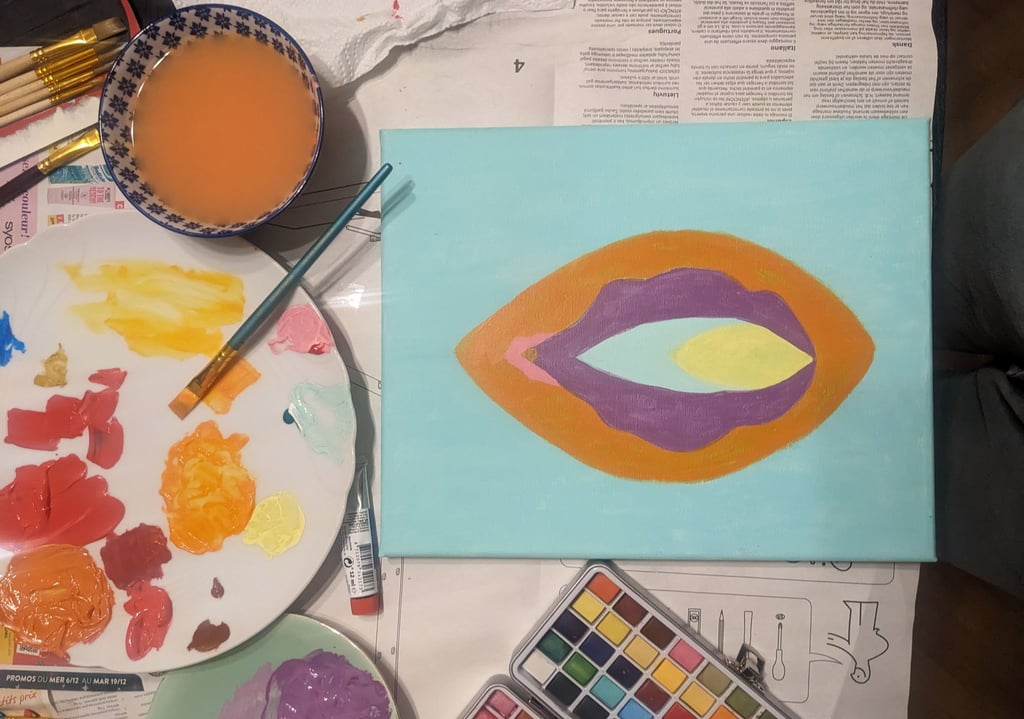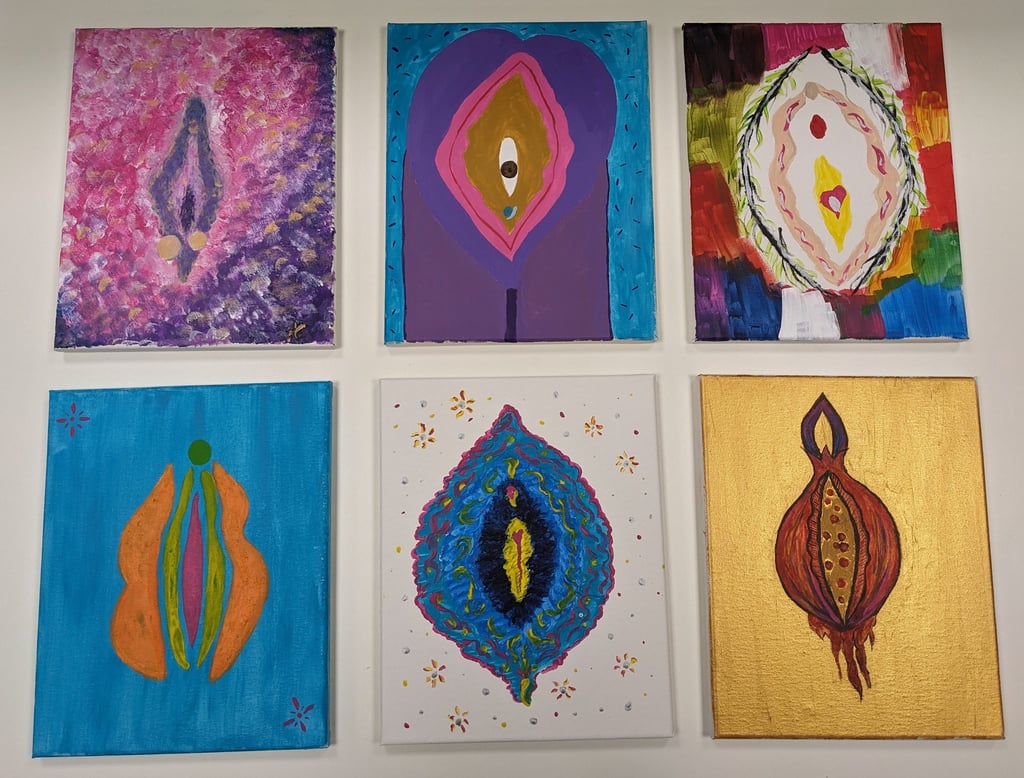My experience with focus group discussions with vulva painting
5/1/20242 min read


Focus Group Discussions with Vulva Painting
In a previous blog, I shared how the idea of incorporating painting into my focus groups was inspired by a feminist paint-along I attended in Bristol. Initially, I hoped to bring the artist to Belgium to lead the painting sessions, but budget constraints made this unfeasible. In the end, I decided to lead the sessions myself.
Instead of closely following a step-by-step guide, I chose to give participants the freedom to paint whatever they wanted. I worried that a structured approach might draw too much attention to the painting itself and detract from the discussions. My goal was for the painting to act as a creative outlet and an icebreaker rather than the main focus.
Here’s how I organised the sessions:
I scattered a variety of vulva paintings by different artists across the table to inspire participants.
I provided a simplified step-by-step guide created by the artist Geet Lush for those who wanted some direction.
Each participant was given paints, brushes, and paper before we started.
I explained that the painting was just a way to keep our hands busy during the conversation, making it easier to discuss these often personal topics.
Some participants followed the step-by-step guide, but most chose to paint their own interpretations. The results were stunning—beautiful, creative, and deeply original. I was genuinely impressed by the variety and thoughtfulness of their work. I’m now excited to organise an exhibition of their creations alongside my research findings!
Participant Reactions to Painting
The response to the painting activity was overwhelmingly positive. For some, it was the main reason they chose to participate in the study. Others admitted they’d been nervous at first, worried they weren’t “creative enough,” but ended up really enjoying the process.
The Power of Shared Conversations
The feedback on the focus groups as a whole was also incredibly encouraging. Many participants said they felt empowered hearing others share their insecurities and experiences. For some, it was the first time they realised they weren’t alone in their feelings.
Several women expressed that they wished there were more initiatives like this, where open, honest conversations about these topics could take place in a safe and supportive environment. Some even described the experience as not just contributing to research, but as empowering and almost therapeutic.
Reflection
Our choice of research methods always influences what we find. The topic itself likely shaped who felt comfortable participating—those who are open to discussing genitalia and sexuality or those who view this research as particularly important. Incorporating painting added another layer of selection: individuals who dislike painting or creative activities may have opted out. This means I may have missed perspectives from these people.
However, the benefit of this approach was attracting participants who felt comfortable discussing these topics. Their openness resulted in exceptionally rich and detailed data, which adds great value to the study.


